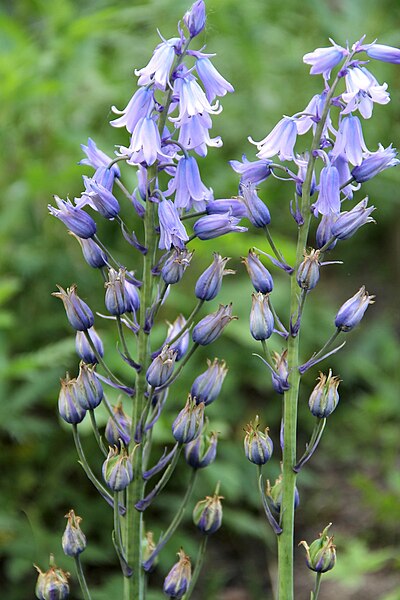Hyacinthoides non-scripta
Hyacinthoides non-scripta is a bulbous perennial plant found in Atlantic areas from the north-western part of the Iberian Peninsula to the British Isles, and also frequently used as a garden plant. It is known in English as the common bluebell or simply bluebell, a name which is used in Scotland to refer to the harebell, Campanula rotundifolia. In spring, H. non-scripta produces a nodding, one-sided inflorescence of 5–12 tubular, sweet-scented violet–blue flowers, with strongly recurved tepals, and 3–6 long, linear, basal leaves.
Hyacinthoides non-scripta
H. non-scripta has dark flowers in one-sided, nodding racemes, with strongly recurved petals and white pollen.
H. hispanica has paler flowers produced on all sides of the upright stem, less recurved petals and blue pollen.
Bluebells in Pryor's Wood, Hertfordshire
Campanula rotundifolia, the harebell, Scottish bluebell, or bluebell of Scotland, is a species of flowering plant in the bellflower family Campanulaceae. This herbaceous perennial is found throughout the temperate regions of the northern hemisphere. In Scotland, it is often known simply as bluebell. It is the floral emblem of Sweden where it is known as small bluebell. It produces its violet-blue, bell-shaped flowers in late summer and autumn.
Campanula rotundifolia
Petal lobes curve outwards
Growing wild on a soil covered concrete slab
White variant








